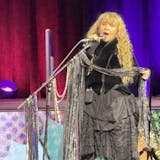The first sextet of Minneapolis electeds to vote on the issue of redesigning 3rd Avenue S. in downtown Minneapolis deadlocked Tuesday on whether to put the majority of the street on a lane-shrinking road diet.
The infrastructure-focused panel punted the issue to the April 15 City Council session without a recommendation. About all its members could agree on was to tell staff to try harder to free up more space for pedestrians next to City Hall, which has been a sore point with an advisory committee.
The 3-3 split came after debate in the Transportation and Public Works Committee over the proposed redesign, which is intended to offset the recent loss of bike lanes or bike-friendly routes thought downtown's core.
The redesign adds protected bike lanes to the avenue's 15 downtown blocks, but the debate is how many car lanes to keep. The original staff proposal cut the southern nine blocks from four lanes to three--one in each direction plus a shared left-turn lane--allowing two lengthy raised planters in the median to be retained.
But after businesses howled over the loss of lanes, the Department of Public Works returned with keeping four lanes without the median to accommodate the protected lanes. But it also dropped the idea of using planter boxes to separate bike lanes from motorists, subbing the more prosaic white plastic tubes used for other protected lanes. The planted space would move to the curb area or to business property
The crux of the debate is whether three lanes can handle traffic in the more lightly traveled section of the street. The more heavily used northern six blocks would have four lanes, no medians and post-buffered bike lanes.
Council Members Lisa Bender and Cam Gordon floated examples of arterials in their wards that have been trimmed from four to three or even two lanes with higher traffic than 3rd.
Bender cited Lyndale Avenue S. at W. 35th Street, which has an evening peak of 2,360 vehicles per hour, with just two through lanes bolstered by turn lanes. Gordon cited three-lane Riverside Avenue's 1,403 cars in the peak p.m. hour. In contrast, the highest rush-hour volume on 3rd, which has four through and some turn lanes, is 1,326 cars per hour.


